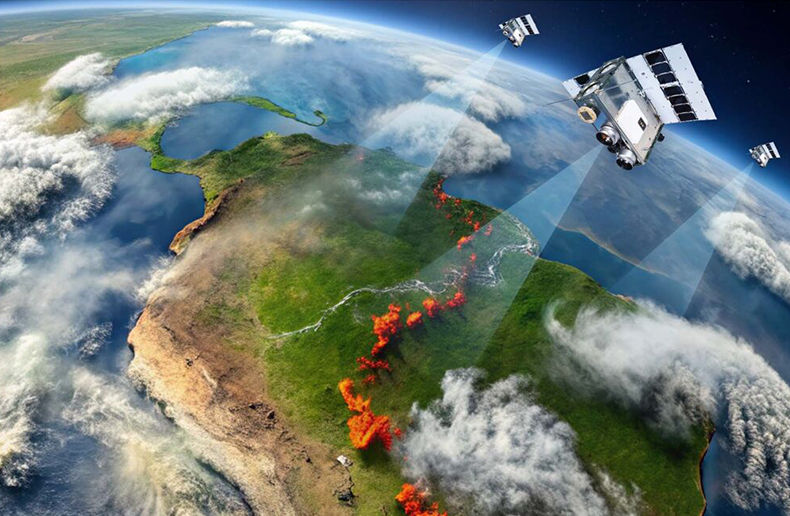Canadian environment, climate change and space and industry ministries on Feb. 8 announced that the country has awarded a $72-million contract to Spire Global Canada to build seven microsatellites designed to monitor active wildfires across Canada on a daily basis.
Part of the country’s larger strategy for satellite earth observation, as spelled out in the document, Resourceful, Resilient, Ready: Canada’s Strategy for Satellite Earth Observation, the WildFireSat mission is slated to launch in 2029. “Developed in consultation with industry and academia, our new strategy outlines the path to equipping Canada with as many tools as possible to confront climate change and to support Canadians in the 21st century,” that document states. “In this new strategy, we outline the path forward to capitalize on satellite technology for day-to-day evidence-based decision making and planning.”
8,000 wildfires each year
On average, the Canadian Space Agency says about 8,000 wildfires burn more than 2.1-million hectares of forest every year, representing a territory equivalent to almost half the size of Nova Scotia. About $1-billion is spent each year to combat wildfires. The mission is expected to save the Canadian economy between $1-billion and $5-billion during its first five years of operation.
“Satellite Earth observation is the only way to provide daily data on all active wildfires spanning the entire Canadian territory,” they stated in an announcement about the deal, awarded to exactEarth Ltd., a subsidiary of Spire, prior to its corporate acquisition.
In addition to providing firefighters with data and improving forecasting, WildFireSat data will also be used in air quality forecasts. “The WildFireSat mission will also reinforce Canada’s position as a global leader in wildfire management and research,” added Jonathan Wilkinson, Canada’s minister of energy and natural resources. According to the statement, investments in WildFireSat “will strengthen Canada’s ability to build, test and assemble small satellites and support the ongoing growth and diversification of the Canadian space sector.”
Related:
Weather radars: Informing Canadians about their exposure to risk







